Lightning crackled on the red screen as thunder roared over the speakers. The room lights went dark as spotlights swiveled about. White tables from both sides of the stage slid together as the lights went up and thumping rock music played.
Three Verizon Wireless executives stood with stoic expressions behind the tables, which held 10 devices that would run on its new 4G LTE network. The services technically had turned on in 38 markets a month earlier, but CES 2011 marked its true coming-out party, with a bevy of gadgets, including four smartphones, along with heavy lightning iconography and, of course, the splashes of Verizon red.
Now that’s how you launch a next-generation cellular technology. There was no doubt 4G was real.
Eight years later, at CES 2019, the emergence of the latest next-gen technology, 5G, is less clear-cut.


Now playing:
Watch this:
Verizon’s first 5G phone, Google’s interpreter service
1:15
Both Verizon and AT&T have boasted of being the first to 5G, while KT argues that a robot in South Korea is its first 5G customer. Muddling things further is AT&T’s insistence on using the term 5G E for its advanced 4G LTE network, which critics say is little more than fake 5G. Still, the company doubled down on the term at a CES keynote Wednesday.
It was supposed to be one of the dominant themes of the show, but 5G was at this week’s CES in name only. There were scant products that could even connect to the limited 5G networks out there. And while many people were discussing the promise and possibilities of the technology, there were only a few concrete examples.
“At CES, 5G is mainly being used as a buzzword and proxy for ‘future of mobility,'” said Avi Greengart, an analyst at Global Data.
In short, it was like every other trade show discussion about 5G – all hype. And thanks to the carriers, 5G maybe even more confusing.
“The US carriers are not helping themselves or their customers in their ‘I am first and I am better’ race,” said Carolina Milanesi, an analyst at Creative Strategies. “It is a sad state of affairs, to be honest.”
These are the weirdest products of CES 2019






+23 more
When Verizon CEO Hans Vestberg told me he’d be having the first customer of the company’s 5G Home broadband service on his keynote via a livestream, I (half-jokingly) asked him about that robot in Korea, an artificial intelligence-powered device named Lota.
“Oh, don’t bullshit me,” Vestberg said with a groan.
But yeah, that’s the state of 5G hype.
Who’s on first?
Vestberg insists Verizon is the first to 5G thanks to its home broadband service, which launched in October. But some in the industry quibble with the declaration of victory, noting that the company launched the service using a proprietary standard that the industry didn’t agree on.
The company plans to switch to industry-standard 5G, called 5G NR, later this year. But Ed Chan, Verizon’s chief technology architect, justified the move by arguing that its push to get to 5G out aggressively helped drive the industry standard to evolve faster.
AT&T argues that it’s the first to a standards-based, mobile 5G service, which launched last month in 12 cities. Because no 5G phones exist, it launched with Netgear’s Nighthawk 5G Mobile Hotspot.
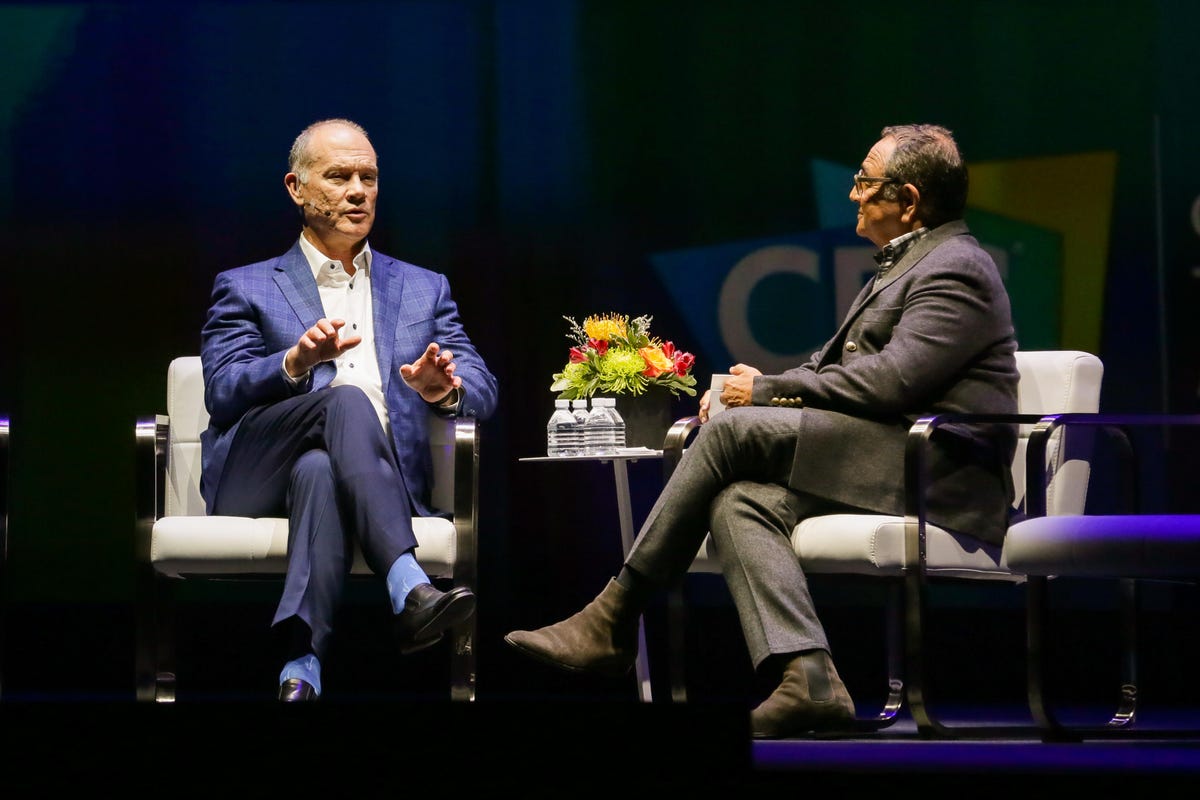

AT&T Communications CEO John Donovan interviewed by MediaLink CEO Michael Kassan at CES 2019.
Sarah Tew/CNET
But AT&T rubbed some in the industry the wrong way when it decided to change the name of its advanced 4G LTE network to 5G E, which misleads consumers into thinking they already have 5G.
It started with commercials, but on Monday, AT&T changed the icon on the upper right corner of its smartphones to show 5G E. At the show, two people not in the industry ask me if what AT&T was offering is 5G.
To be clear, it’s not.
The key is the E, which stands for Evolution. In other words, it’s a work in progress toward 5G.
AT&T Communications CEO John Donovan stood by the decision in a CES keynote.
“I’m proud that we broke our industry’s narrative two days ago,” he said.


The D Link 5G router.
D-Link
That is, with the 5G E branding, AT&T sets itself apart from its rivals. So what if no other carrier uses the same technology?
While Vestberg said he wouldn’t comment on this rival, Verizon hasn’t been silent.
“When we say ‘5G,’ we mean 5G,” the company tweeted.
Hold your horses
While there was certainly a lot of chatter about 5G at CES, the number of products actually capable of tapping into the next-generation network was small. Most notably, there was the D-Link 5G NR Enhanced Gateway. (Rolls right off the tongue.)
Many executives talked about 5G, but kept the talking points to the broad strokes.
“5G is a quantum leap over 4G,” Vestberg said.
To his credit, Vestberg spent his keynote highlighting potential applications like connecting drones to the network and a 5G journalism lab project with the New York Times. He also announced a $1 million seed fund for new 5G ideas.
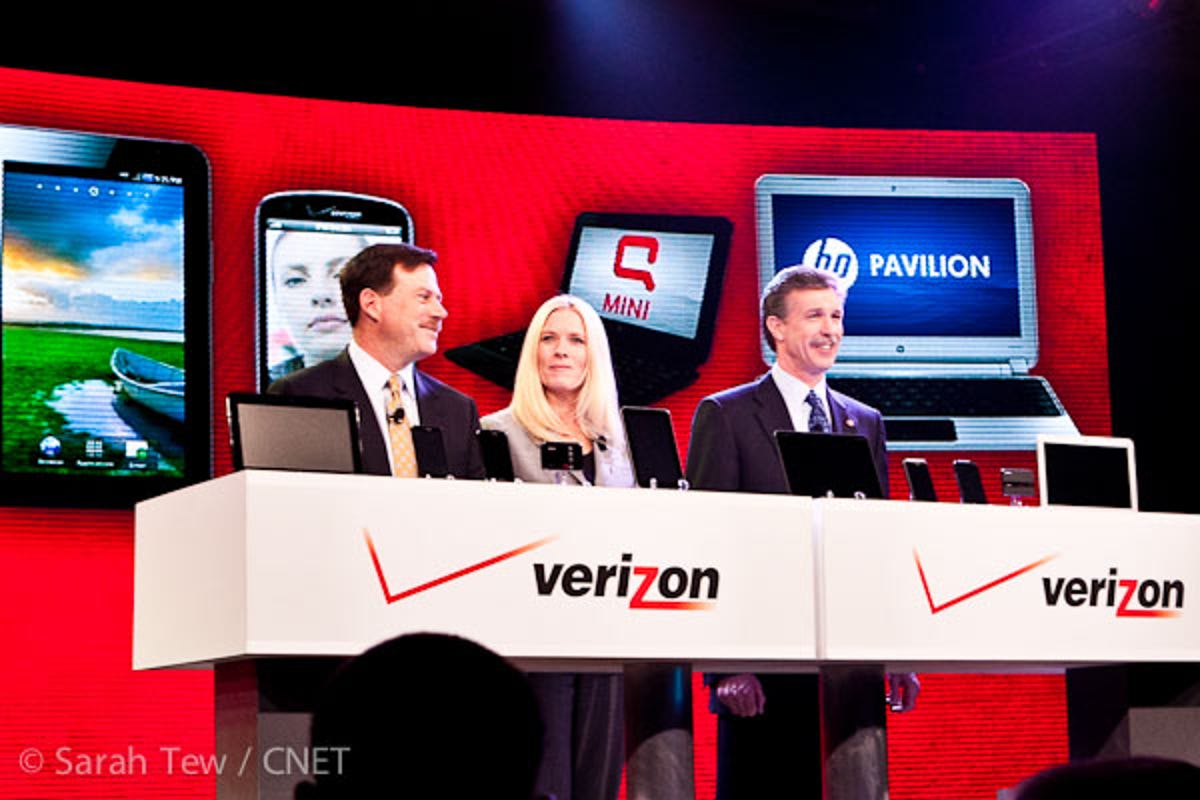

Back in 2011, Verizon went big with its 4G launch, showing off a table full of its first 4G devices including the LG Revolution and the HTC Thunderbolt,
Sarah Tew
Others cautioned not to get too excited too soon.
“The entire infrastructure needs to be upgraded,” said LG Chief Technology Officer I.P. Park. “And that’s going to take time.”
Lisa Su, CEO of chipmaker AMD, said she hasn’t had many conversations about 5G at the show, although she believes it’s an important “enabling technology.”
Gaining clarity
Where Verizon launched 4G LTE all those years ago with four smartphones, we’ve yet to see one for 5G. That could change soon, as a 5G version of a Moto Mod attachment should make the Moto Z3 the first 5G smartphone, which will run on Verizon.
Samsung will also launch a 5G smartphone that could serve as Verizon’s new flagship 5G device.
The Mobile World Congress trade show next month could prove to be a touchstone moment similar to CES 2011. A number of new smartphones from different vendors could tap into the 5G promise.
And despite the confusing mess it’s become at CES, 5G is a technology that should excite you. Beyond a faster connection, the speed and responsiveness of the network will fire up big trends like the internet of things, autonomous driving, streaming virtual reality and telemedicine, among things we haven’t even thought of yet.
And regardless of who was really first, what matters more is building out a network that actually touches your customers.
Because thunder and lightning without substance can only get you so far.
“The first carrier in 5G would mean something if any operator were six to 12 months ahead of the curve,” said Maribel Lopez, an analyst at Lopez Research. “Now it just feels like grandstanding.”
The story originally published on Jan. 10 at 5 a.m. PT.
Update, 2:41 p.m. PT: To include additional background and analyst quotes.
All the cool new gadgets at CES 2019
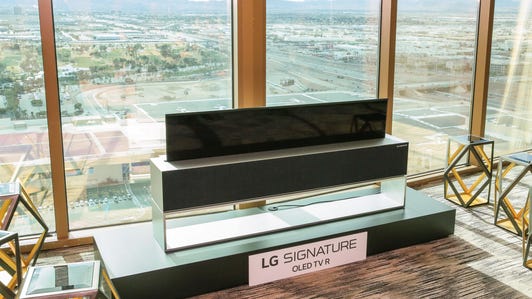

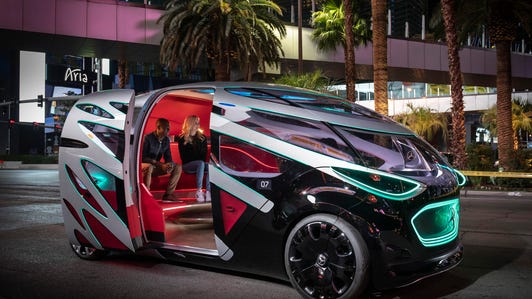

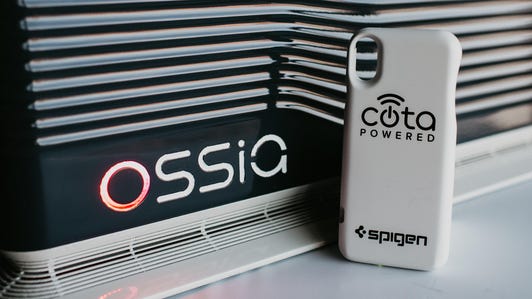

+82 more
CES 2019: See all of CNET’s coverage of the year’s biggest tech show.
CES schedule: It’s six days of jam-packed events. Here’s what to expect.



